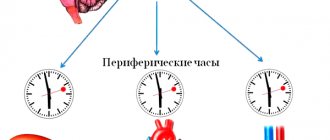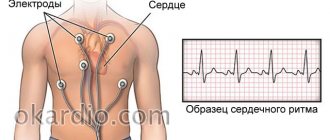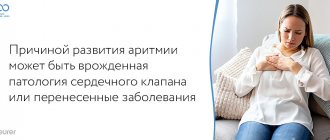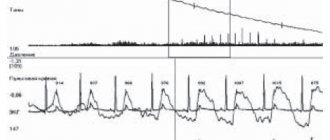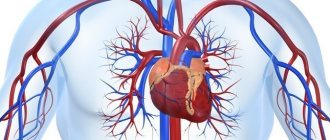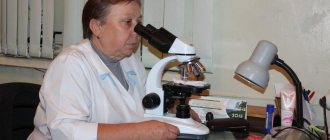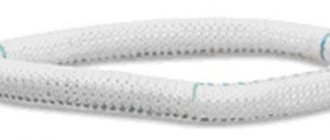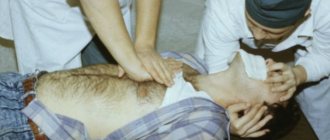In the modern world, filled with endless bustle, obligations, work and other matters of high importance, you need to be able to stop in time and ask yourself the only question: is everything okay with my health? The human heart, unfortunately, has a very limited resource. And all other functions of the body depend on how well it works. Therefore, monitoring blood pressure, one of the most important parameters characterizing the functioning of the circulatory system, is the first necessity of every person who takes care of himself and thinks about his loved ones.
Indications and contraindications
Holter monitoring is carried out for the purpose of:
- detection of arrhythmias;
- detection of myocardial ischemia;
- monitoring the effectiveness of treatment.
1st class indications:
- unexplained fainting (syncope), presyncope, episodes of dizziness;
- repeated palpitations with unknown causes;
- assessment of the effectiveness of antiarrhythmic therapy in patients (the frequency and characteristics of arrhythmia were accurately determined before the start of treatment
- assessment of the heart rhythm with an implanted pacemaker to program its parameters or identify possible malfunctions of the device.
Class 2 indications:
- episodes of sudden shortness of breath, chest pain, or weakness of unknown cause;
- fainting, presyncope, attacks of weakness or palpitations against the background of identified arrhythmia or treatment;
- condition after a heart attack with impaired left ventricular function;
- chronic circulatory failure;
- idiopathic hypertrophic cardiomyopathy;
- assessment of the possible arrhythmogenic effect of certain drugs;
- fixation of heart rate in patients with atrial fibrillation;
- documentary recording of intermittent arrhythmia;
- assessment of the performance of an implanted pacemaker or defibrillator;
- assessment of the frequency of arrhythmia attacks in patients with an implanted defibrillator or pacemaker;
- suspicion of variant angina;
- patients with chest pain for whom taking an ECG with physical activity is contraindicated;
- patients before and after coronary artery bypass surgery for whom exercise testing is contraindicated;
- patients with diagnosed coronary artery disease and chest pain.
Class 3 indications:
- syncope, pre-syncope, episodes of weakness or palpitations, the causes of which have been previously identified;
- episodic symptoms of cerebrovascular accident: attacks of dizziness, tinnitus, headache, decreased vision;
- chronic heart failure;
- arterial hypertension and left ventricular hypertrophy;
- post-infarction state with normal left ventricular function;
- diabetes mellitus (to assess the degree of diabetic neuropathy);
- confirmation of malfunction of implanted devices in situations where other research methods also reveal defects in the operation of devices;
- preventive examination of a patient with an implanted pacemaker or defibrillator.
Relative contraindications:
- injuries,
- chest burns,
- chronic heart failure;
- as well as other violations of the integrity of the skin in the area where the sensors are attached.
- The examination can be difficult if the patient is highly active; sudden movements may cause the sensors to come off.
Holter examination - what is it?
One type of ECG is the Holter test. The procedure is carried out using a small device with electrodes attached to the subject's body. The device is attached to the waist, and the electrodes are attached to the chest. When the device is turned on, the patient's pulse rate begins to be recorded. The procedure itself does not require special preparation. Before attaching the electrodes, the nurse carefully degreases the area of the body where they will be attached, which is why some men need to shave their chest hair. The device connected to the patient should not limit his movement in any way, as it will accompany the patient throughout the day. The electrodes should be securely attached to the chest and the device to the waist so as not to cause discomfort.
The Holter test is a non-invasive method for measuring heart rate.
It is recommended for suspected heart problems, as well as for people at risk and patients over 45 years of age, when the incidence of heart disease increases significantly.
ABPM
Daily blood pressure monitoring is a diagnostic method that records blood pressure values throughout the day.
The procedure helps to identify pressure surges and determine hypertension or hypotension.
- The patient is fitted with a cuff similar to a tonometer, which is connected to a register that provides air supply and injection, as well as to a sensor that records blood pressure measurements and stores them in memory.
- After the examination, the doctor transfers the results to the computer when removing the device,
- at the end of which he can issue a certain conclusion to the patient.
How is 24-hour blood pressure monitoring performed?
A cuff is placed and secured on the lower third of the patient’s arm, connected by a flexible tube to a blood pressure monitor, which records the readings. This device is attached to the belt with a special belt.
The device automatically pumps and deflates air in the cuff, which will alternately compress and “release” the subject’s shoulder throughout the day. Sometimes the compression by the cuff is very noticeable - the patient will be warned about this during instruction. Inside the cuff there is a special sensor for recording blood pressure.
Blood pressure measurement occurs automatically after a signal is sent from the monitor’s memory unit. How often measurements will be taken is determined by the doctor individually for each patient when programming the device. Typically, the interval between measurements during the day is 15 minutes, during sleep - 30 minutes.
After 24 hours, the patient returns to remove the device. The readings are transferred to a computer for decoding. After studying the results, the cardiologist issues his conclusion and attaches to it the data recorded by the blood pressure monitor.
Patient's actions during ABPM
During 24-hour blood pressure monitoring, the patient leads a normal lifestyle, however, avoiding alcohol consumption.
Since the device should not touch water, you will have to do without a shower and bath.
When measuring in a sitting position, the patient should straighten his arm with the cuff and place it on the table; when walking, stop and lower his arm.
During the study, the patient will be asked to keep a diary, where he will need to record his feelings and complaints, as well as record the main stages of the day - time of activity, meals, going to bed and waking up, etc.
Indications and contraindications for ABPM
Indications:
- Primary diagnosis of hypertension.
- Monitoring treatment in people with hypertension.
- Obtaining information about the time of day at which the patient’s blood pressure most often increases in order to adjust the doses of drugs received at different times of the day. For example, in patients with high blood pressure at night, it is better to prescribe additional medications at night, and in the morning and daytime, the emphasis is on taking medications in the morning, immediately after waking up,
- Diagnosis of hypertension in individuals with a high level of stressful situations during working hours, when hypertension has a psychogenic cause. Treatment tactics in this case should begin with sedative therapy.
- Sleep apnea syndrome.
- Hypertension in pregnant women, especially with suspected preeclampsia (the study is carried out in a hospital).
- Examination of pregnant women before childbirth if they have hypertension in order to resolve the issue of delivery tactics.
- Examination to confirm professional suitability (train drivers, etc.), as well as for conscripts whose suitability for military service is in doubt.
Contraindications:
- Dermatological diseases associated with damage to the skin of the upper limb - lichen, fungus, etc.
- Blood diseases (thrombocytopenia, hemorrhagic purpura, petechial rash, etc.)
- Upper limb injury.
- Vascular diseases with damage to the arteries and veins of the upper extremities in exacerbation,
- Mental illness of the patient associated with inability to self-care, with aggression.
HBP Clinic invites you to the 24-hour Holter and ABPM monitoring procedure. Make an appointment by phone: 8 (495) 645-45-46.
24-hour blood pressure monitoring at MediCity
ABPM is a paid medical service everywhere.
In our clinic, this diagnostic procedure is affordable. You can sign up for it and other studies (bicycle ergometry, ECG, ECHO-KG, HOLTER) at any time convenient for you. To do this, just call our contact center by phone: +7 (495) 604-12-12.
Cardiologists and other highly qualified medical specialists at MedicCity will do everything to preserve and strengthen your health!
What should not be done during a Holter examination?
A Holter examination monitors the patient's heartbeat around the clock. This allows you to determine the cause of the arrhythmia and the factors causing cardiac disorders. The patient lives a normal life, however, for the results to be reliable, he must follow several recommendations:
Reduce the use of your mobile phone as this may cause interference with the device. If you must use it, try to keep the phone as far away from the ECG recorder as possible. It is not advisable to take a bath. For one day, you need to change your daily habits a little and take a closer look at your body and its reaction to specific situations.
Monitoring results and standards.
A Holter examination lasts 24 or 48 hours, after which the recording from the device is subject to professional medical analysis, and all notes made by the patient during the examination must be taken into account. Only then will it be possible to comprehensively assess the violations and their causes. The recording from the device is transferred to the computer and the results are presented in clear graphs. It is on this basis that the doctor can determine whether the patient has a disease and which treatment method will be most effective. There are certain standards, different for men and women, that determine the functioning of the heart. The normal QT in men is up to 430 ms, in women - 450 ms.
The Holter test records the patient's heartbeat around the clock, for exactly 24 or 48 hours. This allows you to identify possible cardiac arrhythmias, confirm or exclude heart block, coronary heart disease, as well as cardiac causes, which can be the source of frequent fainting and loss of consciousness.
Holter testing - how long does the test take and what does it look like?
Many people wonder what a heart holter is and how the examination is carried out. First of all, you need to know that it lasts a relatively long time, because the device accompanies the patient for 24 or 48 hours, depending on the doctor's recommendations. Once the electrodes and machine are attached, the equipment should be worn throughout the test, during which your heart rate is recorded and monitored in a variety of situations and daily activities. The device is not removed during sleep, when the heart is also beating.
Thanks to this, the doctor has the opportunity to observe work in conditions in which it is impossible to use the traditional ECG method . During this time, the patient is required to keep a detailed diary in which he writes down any ailments and circumstances, indicating the time of their occurrence. If the patient is taking any medications, they should also indicate this in their records.
Currently, various devices for Holter testing are used. ECG signals in 2, 3 or 12 leads are recorded for 24 or 48 hours. In most cases, a three-channel system is used.
